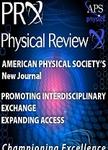版权所有:内蒙古大学图书馆 技术提供:维普资讯• 智图
内蒙古自治区呼和浩特市赛罕区大学西街235号 邮编: 010021

作者机构:Institute for Theoretical Physics University of Wroclaw 50-204 Wroclaw Poland Bogoliubov Laboratory for Theoretical Physics JINR Dubna 141980 Dubna Russia National Research Nuclear University (MEPhI) 115409 Moscow Russia Marian Smoluchowski Institute of Physics Jagellonian University Cracow 30-348 Cracow Poland Matrosov Institute for System Dynamics and Control Theory Irkutsk 664033 Russia Department of Physics and Astronomy University of California Los Angeles California 90095-1547 USA
出 版 物:《Physical Review D》 (Phy. Rev. D)
年 卷 期:2017年第96卷第9期
页 面:094008-094008页
核心收录:
基 金:Institute for Theoretical Physics of the University of Wroclaw, (1439/M/IFT/15) Polish National Science Centre Narodowe Centrum Nauki, NCN, (UMO-2011/02/A/ST2/00306, UMO-2013/09/B/ST2/01560) Narodowym Centrum Nauki, NCN
主 题:Bound states Finite temperature field theory Nonperturbative effects in field theory Quark-gluon plasma Relativistic heavy-ion collisions
摘 要:We describe the Mott dissociation of pions and kaons within a Beth-Uhlenbeck approach based on the Polyakov-loop improved Nambu–Jona-Lasinio model, which allows for a unified description of bound, resonant and scattering states. Within this model we evaluate the temperature and chemical potential dependent modification of the phase shifts both in the pseudoscalar and scalar isovector meson channels for Nf=2+1 quark flavors. We show that the character change of the pseudoscalar bound states to resonances in the continuum at the Mott transition temperature is signaled by a jump of the phase shift at the threshold from π to zero, in accordance with the Levinson theorem. In particular, we demonstrate the importance of accounting for the scattering continuum states, which ensures that the total phase shift in each of the meson channels vanishes at high energies, thus eliminating mesonic correlations from the thermodynamics at high temperatures. In this way, we prove that the present approach provides a unified description of the transition from a meson gas to a quark-gluon plasma. We discuss the occurrence of an anomalous mode for mesons composed of quarks with unequal masses which is particularly pronounced for K+ and κ+ states at finite densities a a possible mechanism to explain the “horn effect for the K+/π+ ratio in heavy-ion collisions.